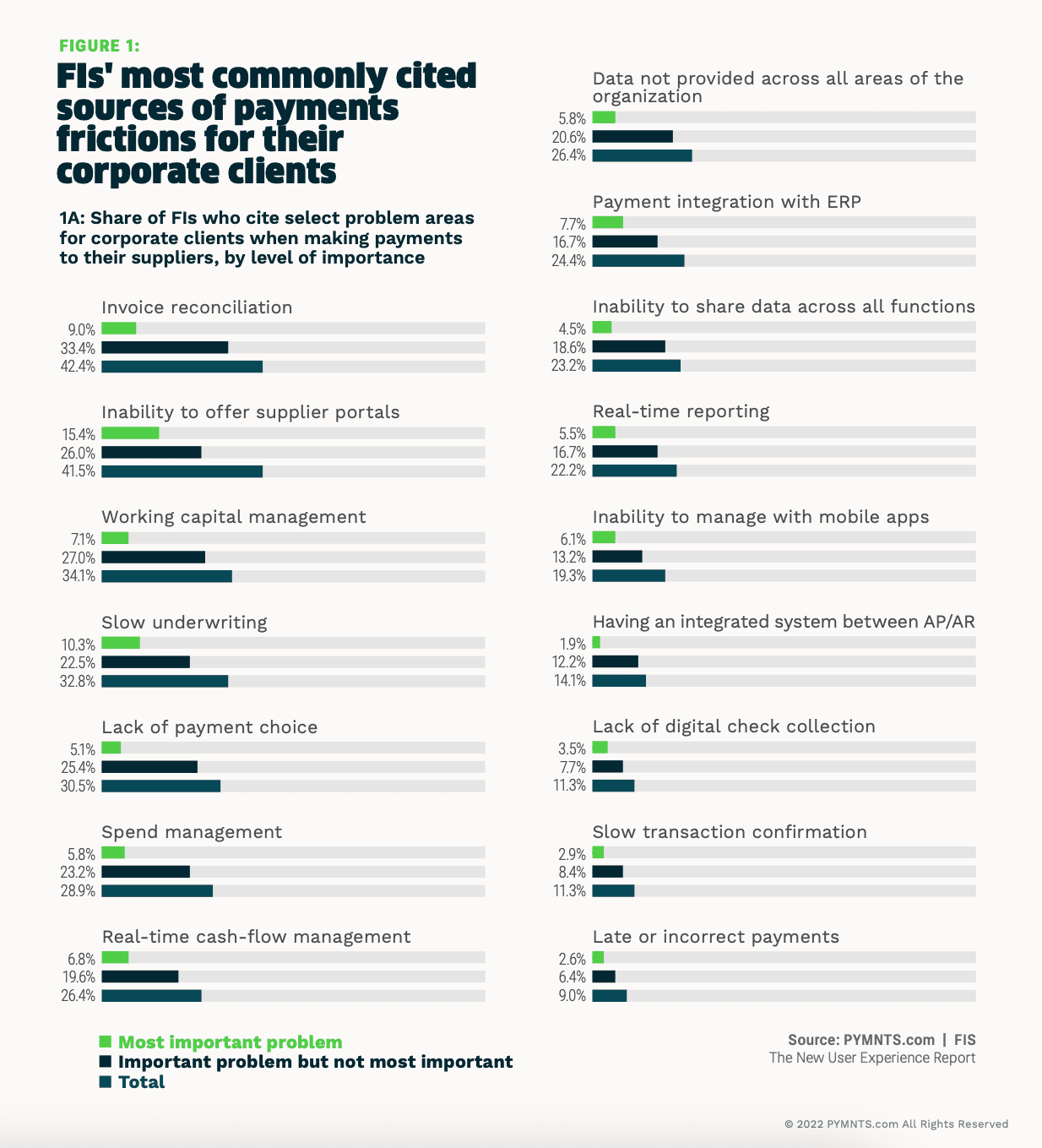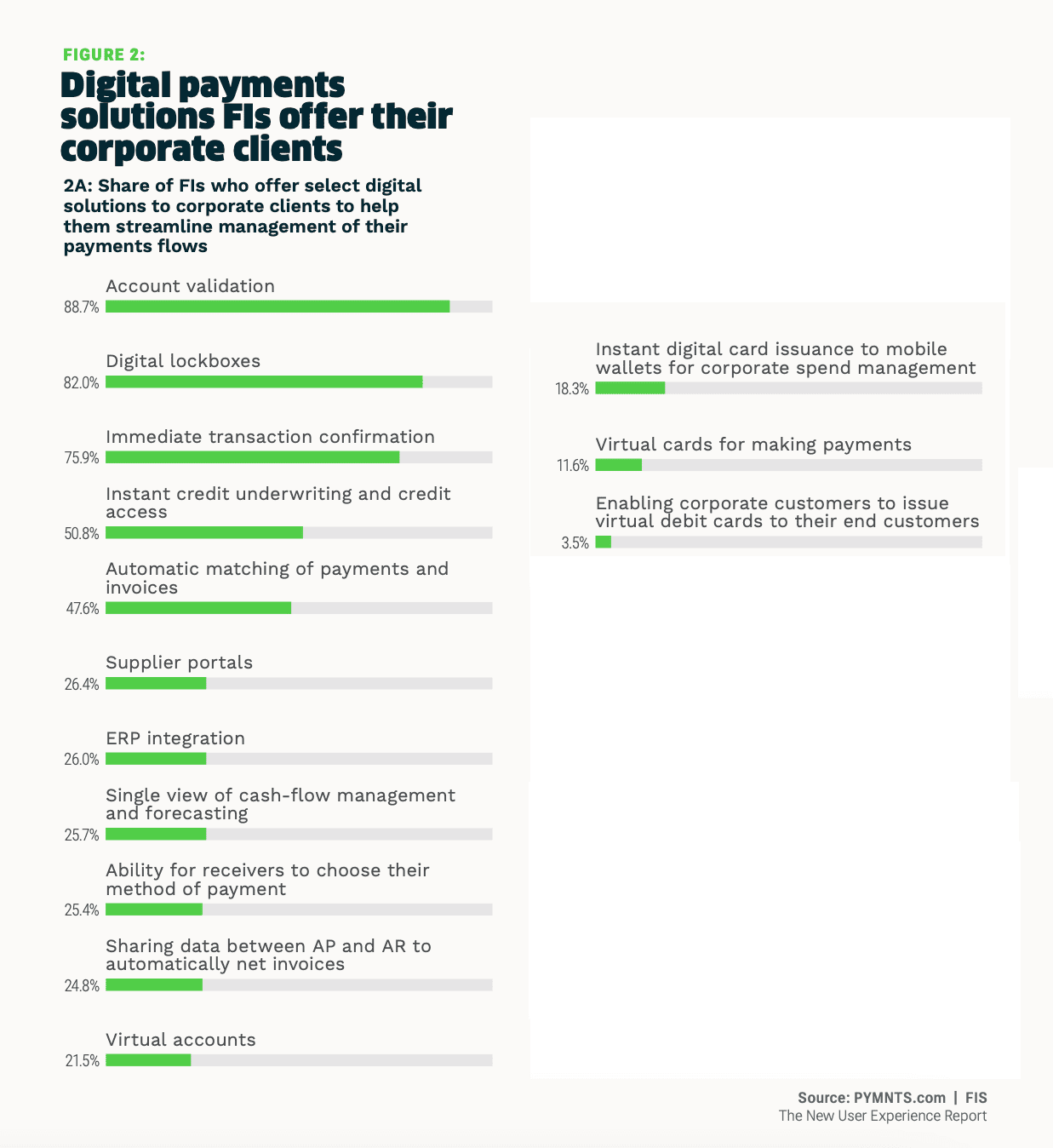89% of FIs Offer Account Validation to Corporate Clients

Financial institutions (FIs) think their corporate clients face two key pain points today: invoice reconciliation and an inability to offer supplier portals, according to The New User Experience, a PYMNTS and FIS collaboration that surveyed 311 FI executives.
Get the report: The New User Experience
Of the FI executives surveyed, just over 42% cite invoice reconciliation complexity as an important source of friction for corporate clients paying suppliers, and 9% of respondents cite it as the most important.
The inability to offer supplier portals is the second most cited source of payments friction for corporate customers, at about 42%, with 15% of those surveyed saying it is the most significant source of payments friction encountered by their corporate clients.

Both problems have been worsened by the pandemic. Seventeen percent of the FI executives say the inability to offer supplier portals is a payments friction for their corporate clients that has been made worse by the pandemic, and 14% say the same of invoice reconciliation.
To help their corporate clients deal with these and other issues, FIs are offering a variety of digital features. PYMNTS’ research shows that 89% of FIs offer account validation and 82% offer digital lockboxes to their corporate clients to streamline the management of payments flows.
In addition to those two most common offerings, FIs deliver to their corporate clients several other digital payments solutions to help them streamline management of their payments flows. About three-quarters of the FIs offer immediate transaction confirmation, and half offer instant credit writing and credit access as well as automatic matching of payments and invoices.
About a quarter of the FIs offer supplier portals, enterprise resource planning (ERP) system integration, single view of cash-flow management and forecasting, ability for receivers to choose their method of payment, and sharing data between accounts payable (AP) and accounts receivable (AR) to automatically net invoices.
